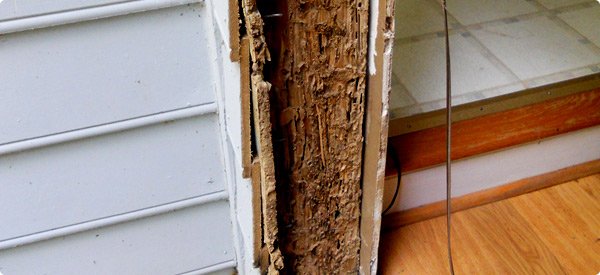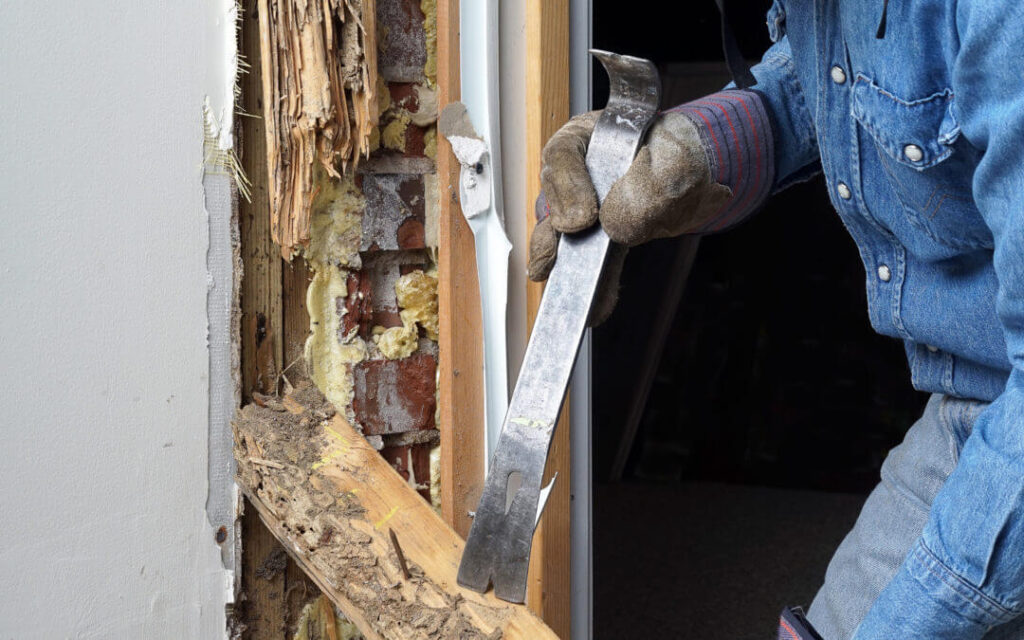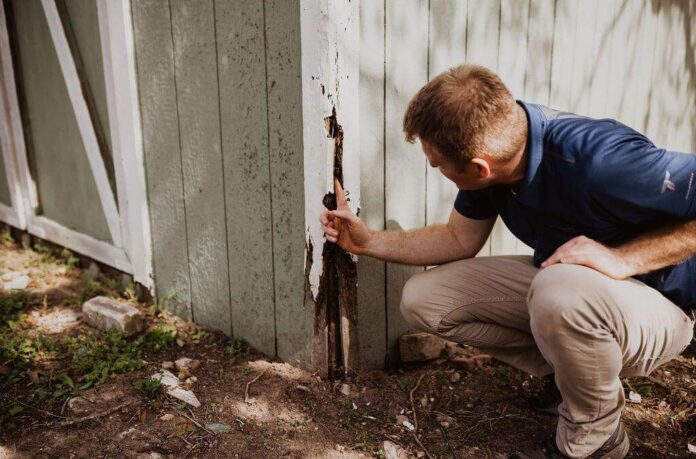Termites are one of the most destructive pests that can infest a home. These tiny insects can silently destroy the wood structures of your property, causing significant damage that might not be noticed until it’s too late. One of the most important steps in preventing termite damage is scheduling a termite inspection. In this guide, we’ll walk you through the termite inspection process in 2025, including what to expect during the inspection, why it’s crucial, and how you can prepare for it.
What Is a Termite Inspection?

A termite inspection is a detailed process where a professional looks at your property to spot signs of termite activity or conditions that might attract them. Inspectors search for clues like mud tubes, frass (termite droppings), hollow-sounding wood, or damaged areas. These inspections are crucial for maintaining your property’s safety and preventing costly repairs. Yesterday we published a post on What Do Baby Termites Look Like? Termite Identification and Treatment in 2025
Cost of Termite Inspections
The termite inspection cost depends on a few factors like the service provider, location, and property size. Here’s an overview:
- Free Termite Inspection: Many well-known companies, like Terminix, offer a free termite inspection to check for active infestations.
- Paid Inspections:
- General inspections cost between $75–$325.
- For real estate transactions, termite letters (or WDI reports) can cost $100–$200. Lenders often require these.
Factors that could make an inspection more expensive include:
- Large property size requiring longer inspection times.
- Hard-to-reach areas like crawl spaces or tall attics.
It’s wise to balance cost with quality. Cheaper services are tempting, but investing in a reputable company may save you money in the long run. Read our latest post, Tiny Baby Termites? Everything You Need to Know in 2025
Signs Termite Inspectors Look For
During the inspection, the technician will be looking for the following common signs of a termite infestation:
- Mud Tubes: Small, dirt-like tubes along walls, foundations, or ceilings, which termites use to travel between their colony and food sources.
- Hollow or Damaged Wood: Tapping wood and listening for hollow sounds. Damaged wood may also appear soft, discolored, or cracked.
- Frass (Termite Droppings): Small pellets or sawdust-like debris left by termites after they’ve eaten through wood.
- Swarming Insects: Winged termites, often seen in the spring, are a sign that a colony is mature and reproducing.
- Sagging Floors or Ceilings: In severe cases, termite infestations may weaken wood enough to cause structural issues, such as sagging.
Steps in the Termite Inspection Process

1. Initial Consultation
The inspection begins with a brief consultation where the pest control technician will ask you about any past termite issues, visible damage, or signs of infestation you’ve noticed. This helps the inspector understand potential problem areas and guide their approach.
2. Exterior Inspection
The technician will then begin by examining the exterior of your home, checking for signs of termites or conditions that may attract them. Key areas to inspect include:
- Foundation and Walls: Inspecting for mud tubes, a sign of subterranean termites that travel from the soil to your home’s wood.
- Siding and Trim: Looking for wood damage or evidence of termites near windows, doors, and vents.
- Landscaping and Moisture: Termites are attracted to moisture, so the inspector will check for proper drainage, any leaks, or areas of standing water near the foundation.
3. Interior Inspection
After inspecting the exterior, the technician will move to the interior of your home, paying close attention to:
- Wooden Structures: Inspecting beams, walls, and ceilings for signs of termite damage such as hollow-sounding wood or visible frass (termite droppings).
- Basements and Crawl Spaces: These areas are especially vulnerable to termite infestations. The technician will check for mud tubes along walls or signs of moisture.
- Attics: If accessible, the attic is another critical area for inspection. The technician will look for signs of wood damage, especially around rafters.
4. Moisture and Ventilation Check
Since termites thrive in damp environments, the inspector will assess your home’s moisture levels. The technician may use specialized tools like moisture meters to check for hidden moisture pockets in walls or floors. They’ll also ensure that your home is properly ventilated, reducing the risk of attracting termites.
5. Use of Technology and Tools
In 2025, termite inspectors often use advanced technology and tools to detect termite activity. Some common tools include:
- Termite Detection Cameras: Small cameras that can be inserted into walls to look for signs of termites.
- Moisture Meters: These help identify hidden moisture that may attract termites.
- Infrared Thermometers: These devices help detect temperature changes in walls, which can indicate the presence of termites.
Read Our Most Recently Published Guides on Termites, Earwigs, Fruit Flies, Ants Control, Baby Termites, Carpenter Ants and Gnats:
- How to Get Rid of Bed Bugs Permanently at Home Naturally in 2025
- How Much Does it Cost to Get Rid of Bed Bugs? 2025 Pricing Guide
- Baby Termites vs Ants? How to Tell the Difference
- How Big are Termites? How to Identify Termites and Treatment
- Fungus Gnats vs Fruit Flies: How to Tell the Difference in 2025
- Do Fruit Flies Bite: How to Identify and Get Rid of Them at the House
- How to Get Rid of Gnats in House Quickly? Step-by-Step Process
- How to Get Rid of Gnats Inside the House Quickly? 2025 Step-by-Step Instruction
Why Are Termite Inspections Important?
Regular termite inspections are vital to prevent serious damage to your home’s structure. Termites work silently, so early detection is key. A professional inspection gives you peace of mind and protects your investment. Don’t wait until you notice damage—schedule your termite inspection today. Read also the latest guide on How Big are Termites? How to Identify Termites and Treatment
Protect Your Home from Termites
Termites don’t take breaks, and neither should you. Whether you’re looking for a “termite inspection near me” or advice on termite inspection costs, knowing the process can help you stay prepared. Don’t risk costly repairs. Protect your home today with a professional termite inspection! Follow Us on Facebook, Pinterest and Twitter for the latest updates.
FAQs
How does a termite indicator work?
A termite indicator detects moisture, heat, or termite movement. These tools help professionals locate hidden infestations.
Can I do a termite inspection myself?
You can inspect your home for visible signs like mud tubes and damaged wood. However, termites often hide in inaccessible areas. Professional inspections are more thorough.
What happens if termites are found during inspection?
If termites are present, the inspector will recommend treatments. You’ll receive a detailed plan to eliminate the current infestation and prevent future ones.
How do termite inspectors find termites?
Inspectors use tools like moisture meters and thermal imaging cameras. They also rely on their expertise to locate signs that aren’t easily visible.
What if a house fails a termite inspection?
If termites are found during a home inspection for real estate purposes, the seller may need to handle treatments before closing the sale.
Do termite inspectors check every room?
Yes, they try to access all areas, including attics, basements, and crawl spaces, to ensure thorough checks.
Who pays for a termite inspection?
Homeowners usually pay for inspections, but some pest control companies offer free termite inspections as part of their service.
Should I buy a home with termite damage?
It depends on the extent of the damage. You should ask the seller to address the problem before buying. Get advice from your inspector and be cautious with serious infestations.



